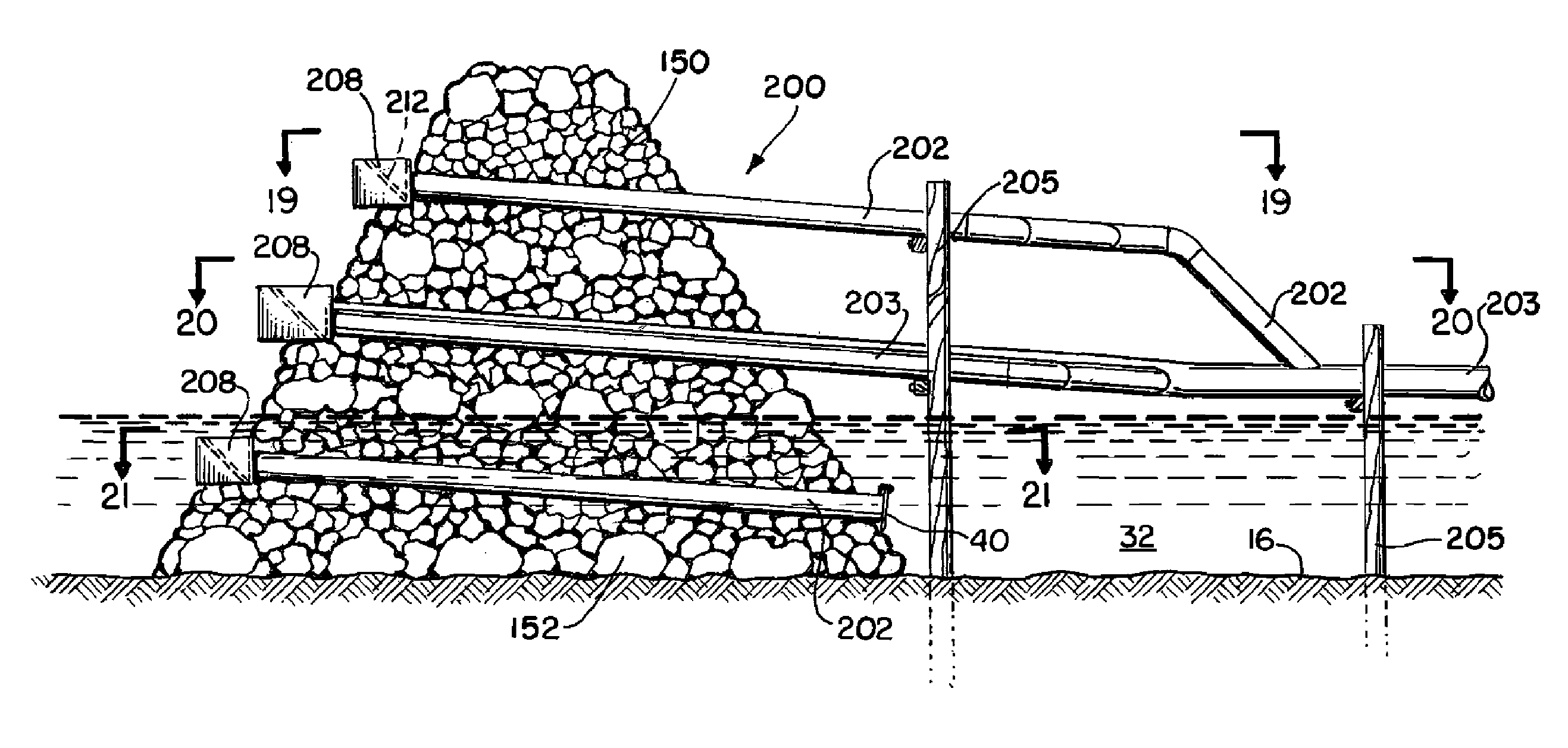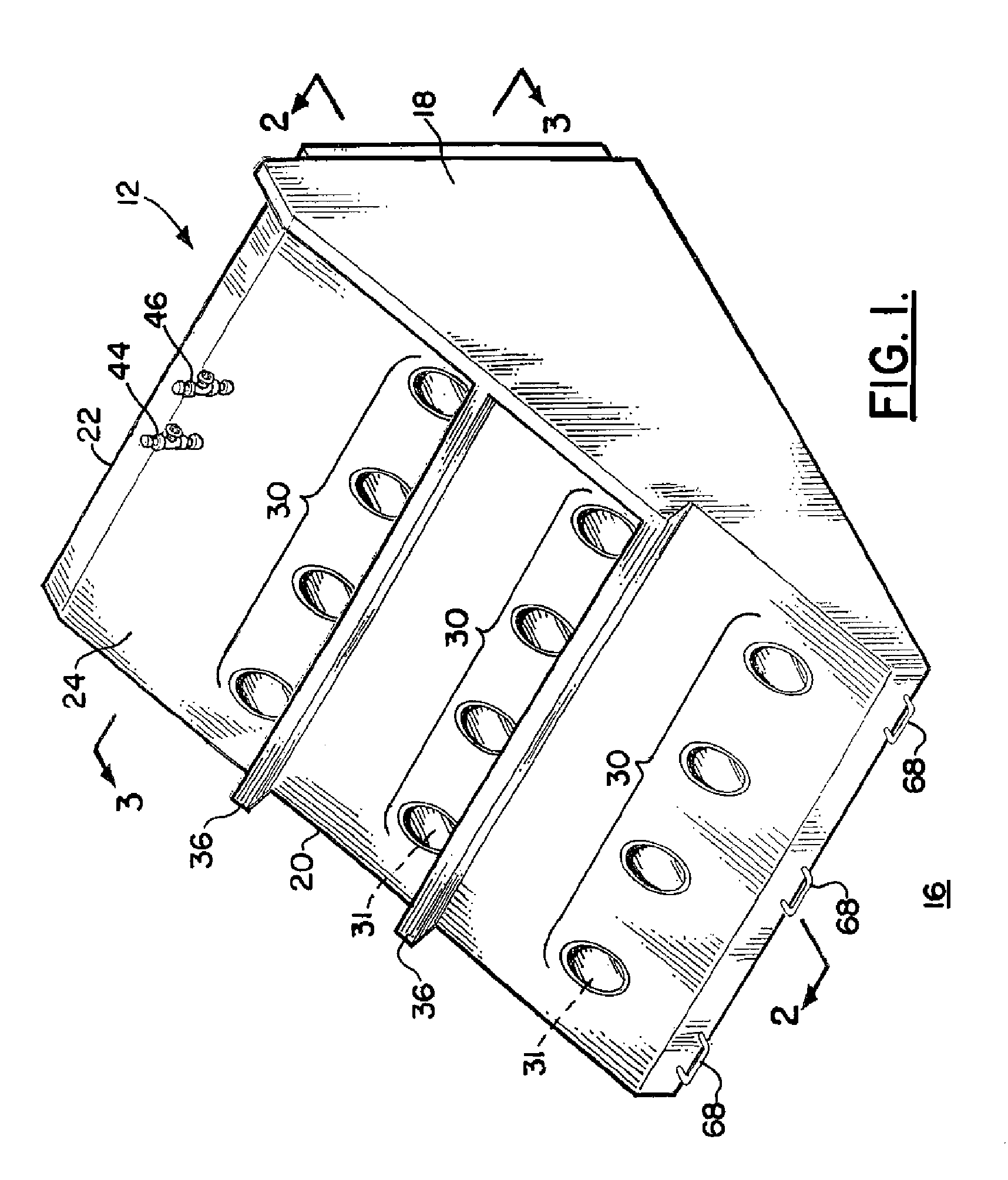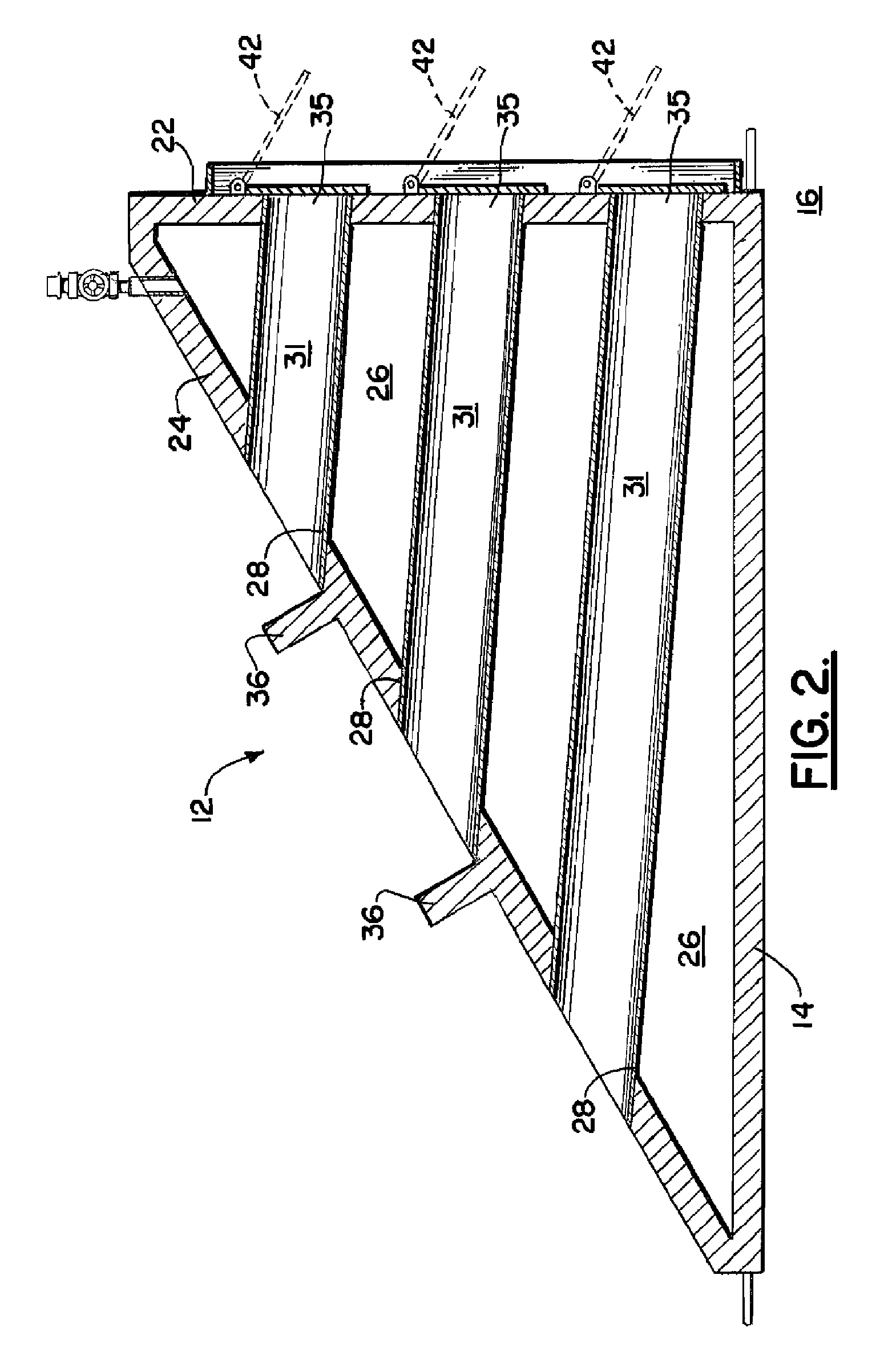Wave suppressor and sediment collection system
a sediment collection system and wave suppressor technology, applied in the direction of piers, land reclamation, groynes, etc., can solve the problems of easy erosion, loss of valuable coastline, etc., to stop the erosion of newly deposited material, stop polluting and contaminating areas, and maximize sediment recovery
- Summary
- Abstract
- Description
- Claims
- Application Information
AI Technical Summary
Benefits of technology
Problems solved by technology
Method used
Image
Examples
first embodiment
[0075]Reference is now made to FIGS. 18 through 24, where the WSSC System, labeled System 200 is incorporated into a rock jetty 150, of the type which has been constructed to block the entrance to the waterway referred to as Mr. Go in South Louisiana. As illustrated in top views in FIGS. 19 through 21, there is provided a rock jetty 150 into which the system 200 is incorporated. In FIG. 21, taken along lines 21-21 in FIG. 18, it is foreseen that the base 152 of the jetty 150 would be laid in place, and then a plurality of elongated pipes 202 would extend from the forward point 156 of jetty 150, in this case three pipe sections 202 to the rear point 158 of rock jetty 150. At the forward point 156, the three pipes 202 would extend from a trough 208, as illustrated in FIG. 24, having an upright rear wall 210, a angulated floor 212, and a pair of side walls 214, so that the trough 208 would serve to capture the flow or water 32 carrying sediment 34, and the angulated floor 212 would dir...
second embodiment
[0081]Reference is now made to FIGS. 26A-33C, which illustrate the WSSC System as it would be installed through a rock jetty 150 and will be illustrated as WSSC System 300.
[0082]Turning now to FIGS. 26A and 26B, there is illustrated a body of water 60 having a current illustrated by arrows 65, flowing towards a rock jetty 150 as illustrated. In FIG. 27 there is a plurality of sediment collection components 302, which will be described below, positioned through the rock jetty 150 for the reasons as will be described further. As illustrated more clearly in FIG. 27, there is provided a single sediment collection component 302, extending through a rock jetty 150. The principal function of each of the components 302 is to receive water and sediment through the component 302 from the unprotected side 151 of the jetty 150 to the protected side 153 of the jetty 150 in order to enable sediment to be carried through the components 302 from the unprotected side 151 of the jetty 150, to the pro...
PUM
 Login to View More
Login to View More Abstract
Description
Claims
Application Information
 Login to View More
Login to View More - R&D
- Intellectual Property
- Life Sciences
- Materials
- Tech Scout
- Unparalleled Data Quality
- Higher Quality Content
- 60% Fewer Hallucinations
Browse by: Latest US Patents, China's latest patents, Technical Efficacy Thesaurus, Application Domain, Technology Topic, Popular Technical Reports.
© 2025 PatSnap. All rights reserved.Legal|Privacy policy|Modern Slavery Act Transparency Statement|Sitemap|About US| Contact US: help@patsnap.com



